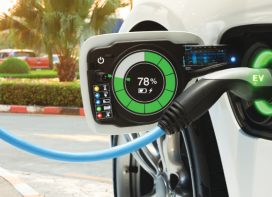• Infrastructure which last longer, ensure sustainability
At the heart of it, BRT networks are infrastructure development projects which are weighed by how they stand the test of time. Add to it, operational efficacy and sustainability. BRT systems which look to improve mobility and decrease carbon footing use buses with minimised emissions; build smart infrastructure such as median stations to serve buses on either side and overtaking lanes to reduce dwell time and emission at stations; build and maintain roads which have extended lifespan.
• Stations, where comfort meets efficiency
Comfort, safety and efficiency ensure rapid transit systems (BRT included) are in high demand among the public. Stations can guarantee safety with welllit, transparent structures with additional measures such as sliding doors and also being wide enough to accommodate passengers. The same goes for buses, with the addition of providing more doors to ease boarding and deboarding.
• Communication for a seamless experience
Studies show that customer satisfaction is linked to knowing when the next bus will arrive. Giving customers information, through passenger information systems (PIS), is critical to a high quality of service and a positive overall experience. That along with branding enables more footfall and awareness of the facilities and the system’s capabilities. A BRT system which has its communication game on board would have more passengers aboard.
 • Complete BRT’s offer universal access, transit integration
• Complete BRT’s offer universal access, transit integration
The most important factor of a public transit system is universal accessibility. And then how it furthers that experience by way of integration with other sustainable transit means. BRT systems must complement universal access with integration to pedestrian and cycle infrastructure and other rapid transit forms.
• Getting the basics right
The project includes segregated bus ways with stations in the median; accessible and comfortable bus stations with level boarding and external ticketing by way of automated fare gates, smart card, and QR code; two kinds of control centres, one which monitors the operations and the other for traffic management to ensure intersection priority.
• Expansion through integration a priority
The system’s initial priority is to ensure route rationalisation. They aim to achieve this by creating a strong network of feeder and trunk bus services. In fact, every bus plying in tandem with the system will be GPS-fitted, to provide real-time information that extends beyond the system and eases integration.
• Hit the ground running
 Within six months of the trial run, HDBRTS is recording footfalls of around 70,000 passengers daily with 100 operational buses – operating till midnight. This figure is only bound to increase as the full strength of the system is reported to be 400 air-conditioned buses.
Within six months of the trial run, HDBRTS is recording footfalls of around 70,000 passengers daily with 100 operational buses – operating till midnight. This figure is only bound to increase as the full strength of the system is reported to be 400 air-conditioned buses.
These factors along with the highquality pedestrian infrastructure and universal accessibility are putting the HDBRTS on the world map. It even makes sense for other fast-growing Indian cities to draw inspiration from and use the BRT system to tackle their transit demands. It makes the case that though the system hasn’t succeeded as expected in India, there is enough cause and reason to tweak it to the BRT Standard.
 TrafficInfraTech Magazine Linking People Places & Progress
TrafficInfraTech Magazine Linking People Places & Progress


